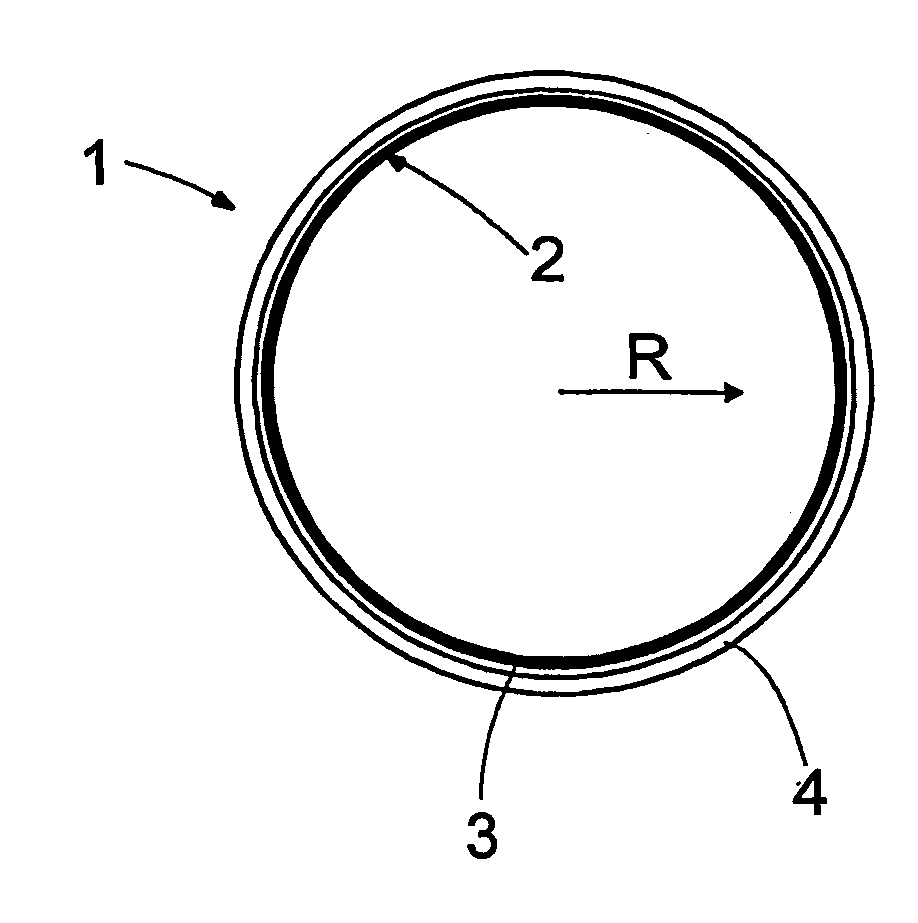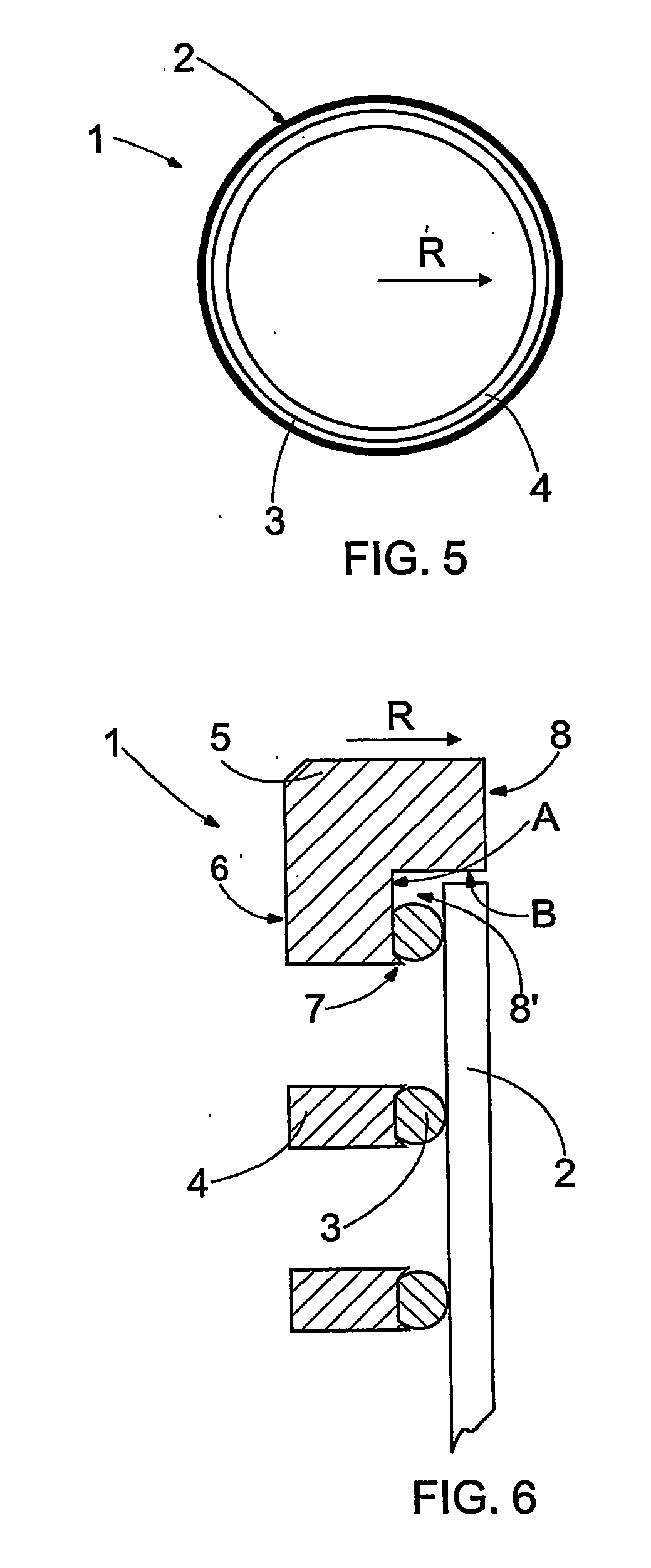Method for manufacturing screen cylinder and screen cylinder
- Summary
- Abstract
- Description
- Claims
- Application Information
AI Technical Summary
Benefits of technology
Problems solved by technology
Method used
Image
Examples
Embodiment Construction
[0020]FIG. 1 is a schematic cross-sectional view of a screen cylinder 1 as seen from the end of the screen cylinder 1, and FIG. 2 is a schematic cross-sectional view of the screen cylinder of FIG. 1 in the axial direction of the screen cylinder 1. On the inner surface of the screen cylinder 1, there are screen wires 2 placed around the entire inner circumference of the screen cylinder 1 so that they form a screen surface. Between the screen wires 2, there are screen slots through which liquid and a desired part of the fibres is allowed to flow outside the screen cylinder 1 while slivers and too large fibres, fibre bundles and any other material to be screened remain on the inner surface of the screen cylinder 1 to be removed at its other end. The screen wires 2 are fastened to support wires 3 or rods 3 before the support rods 3 are bent in the shape of a ring in such a manner that a screen cylinder 1 having a suitable diameter is formed. The screen cylinder 1 can also be made in suc...
PUM
| Property | Measurement | Unit |
|---|---|---|
| Force | aaaaa | aaaaa |
| Circumference | aaaaa | aaaaa |
Abstract
Description
Claims
Application Information
 Login to View More
Login to View More - R&D
- Intellectual Property
- Life Sciences
- Materials
- Tech Scout
- Unparalleled Data Quality
- Higher Quality Content
- 60% Fewer Hallucinations
Browse by: Latest US Patents, China's latest patents, Technical Efficacy Thesaurus, Application Domain, Technology Topic, Popular Technical Reports.
© 2025 PatSnap. All rights reserved.Legal|Privacy policy|Modern Slavery Act Transparency Statement|Sitemap|About US| Contact US: help@patsnap.com



